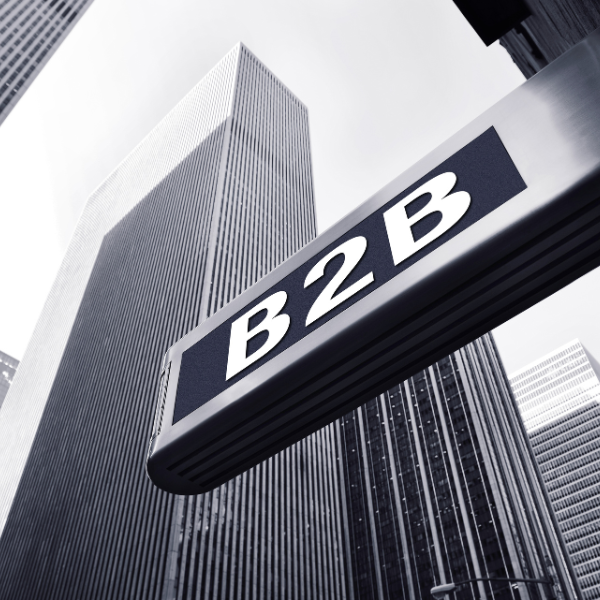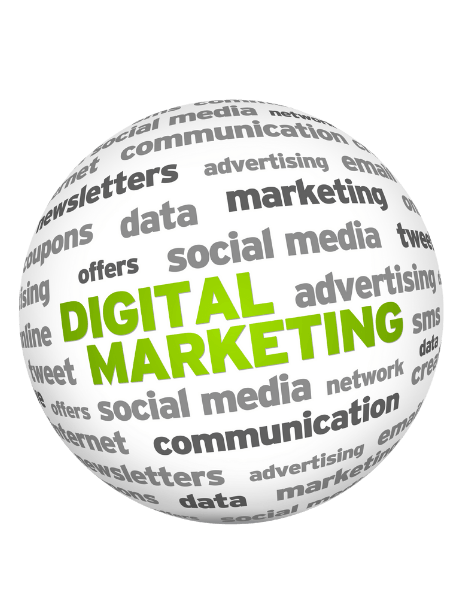CALL US TODAY! (404) 850-8333
Five Ways To Easily Improve Website's Usability
The usability of a website plays a major role in its overall performance and success. If people can’t easily use your website they won’t likely be purchasing your product or service and certainly aren’t going to be coming back. The lack of a user-friendly interface typically results in a higher bounce rate which in turn begins undermine SEO, sales, conversions and can sabotage even a great website.
Fortunately, there are a number of small-scale changes one can make to enhance critically important site elements such as font, layout, navigation, color scheme and more. There are multitude of different aspects and avenues of discussion we can dive into with the five ways to improve usability listed below, but the primary goal of this article is to introduce only the basics of these concepts while providing simple ways to apply them in your own website.
Number One: Readability
The readability of a website is quite possibly one of the easiest things to update and the affects it can have on bounce rates , website credibility and, of course, usability are rather significant. Sadly, this element of web design is often overlooked in small business websites and quickly arranged startups.
The art of typography is a school of design all on its own, so instead of digging down deep into the details we’re going to cover several key principles that you need to be aware of when deciding how to change your website’s typeface.
Font Size
When analyzing or reviewing websites, something we come about far too often is a website that has teeny tiny words jammed together in long blocks of hard-to-read paragraphs. The majority of information presented by a website is delivered through written text, and when a visitor has trouble reading what’s right in front of them they can quickly determine your website as an unqualified source.
While the typical standard for font size is around 14px (pixels), your safest bet is closer to 16px, which will provide a big help to older visitors with weaker vision. Anything under 14px is a danger zone and can hinder readability for your users. It might be worth noting that this applies primarily to the main body of content on a website, other elements such as the footer copyright traditionally go a tad lower in pixel size. The font family you decide to use can play a role in the appropriate size for your text as well, so just experiment to find what works best for your website.
Headers
The next big factor in improving readability through typography is making good use of headers. Most websites include at least a header at the top of the page with the same name as the page the current viewer is on (i.e. the about page will have a header of “About”). However, you can do so much more with headers to maximize your content’s legibility .
You can think of a web page’s headers almost like a table of contents. It gives a brief summary of the text directly below it, making the content far easier to scan for readers which makes them more likely to stay and read the whole thing, or at least the most important bits in their mind.
This idea of the “separation of content” is something that has been discussed, rolled over and examined for years. Large blocks of text can be intimidating , and with the fast-paced mentality of modern internet viewers it will likely just be skipped. There’s no point in actively pursuing one hard-to-read option when there’s an ocean of other, higher quality options only a click away.
Color Contrast
The final element of typography we’re branching into will be the idea of color contrast. With most websites this isn’t really a problem, but it could be improved . In a few websites this is actually a huge issue that greatly suppresses the effectiveness of their content and, in turn, their website as a whole.
Your text should be large enough to be read easily and separated for a smoother, less intimidating layout, but it should also have a strong contrast between text color and background color . For instance, you wouldn’t want to put bright yellow text on an orange background because the color difference between those two are so subtle that it make your content incredibly difficult to read, and potentially impossible for older viewers to even notice.
You might think that’s pretty self-evident, but the proper use of color contrast goes beyond avoiding similar colors. You also need to hold back from using exceedingly contrasting background or text colors. These hyper-contrasting colors are often too bold for the human eye and can actually be uncomfortable to stare at for more than a few moments. Though they are usually rare to see, some websites have taken to using neon-bright blues, green, pinks and similar colors that seem to burn as intensely as the sun itself when popped onto the screen.
One can be certain that a viewer will turn away and not come back if this is the case. The readability of text should require absolutely 0% strain on the readers’ end. Anything more and it can become detrimental to your website’s usability and hurt your campaign in the long-term. So for best results, try using softer colors that are easy on the eyes but retain a solid contrast. This will make reading your content easier for everybody.
Number Two: Reduce Clutter
Another issue that happens with far too many websites is the accumulation of unnecessary clutter. White space (a.k.a. empty or “blank” space between blocks of information on a website) is a vital element to web design. It provides a cleaner layout that is easier to understand and looks great to boot.
Wherever possible, try scaling back the information present on your web pages. Ask yourself “Is this necessary? Could this be better used elsewhere? Can it be slimmed down to not take up so much space?”. Take away anything that isn’t really important, it’ll be a good chance to revitalize the purpose and goals of your website.
Try to make the layout simple, make it easy for visitors to browse upon your site and know exactly what or where everything is without having them put too much thought into it. Your website’s layout should have some degree of autonomy, meaning that it should speak for itself. With such rapid access to information people will stop at the first place that seems to have the information they need, but if they foresee a lot of trouble understanding how to access that information then they’ll drop it and look elsewhere.
Number Three: Cleanup The Navigation
This come right along with number two on the list, but it deserves some extra attention as it’s one of the most critically important elements of a website. The navigation, typically set near the top of the webpage, defines the pages of your website that you want visitors to easily see and have access to.
The main navigation should be static, meaning that it shouldn’t change per page. All the menu links within the main navigation should be seen throughout the entire website, and you should only include the pages that are truly necessary. It’s best to keep the number of main navigation links to a minimum .
The best practice is to have your primary pages in the main navigation that all lead down to those less important “child” pages. If the child pages are important enough to be accessed from the main navigation, try putting them within a drop-down menu of their parent page (i.e. A franchisee website’s About page navigation link might have a drop-down menu consisting of “Our Mission” and “Join Our Franchise”).
Number Four: Use A Smart, Autonomous Color Scheme
This is probably the most difficult number in our list for beginners or novices, though it shouldn’t be viewed as too daunting. There’s a large amount of websites out there dedicated to providing easy color schemes to apply in any website. If there are still questions regarding the how-to on smart color schemes just look ahead to number 5 on our list: Taking Pointers from Trending Web Designs.
So, what we mean by a “smart, autonomous” color scheme is a layout that uses colors in a way to clearly direct visitors where they need to go. Similar to what a traffic officer does, or a landing signal officer that points the way for planes to land safely. In fact, we see colors every day that direct us in all applications of life.
Using the traffic example, there are signs and lines all over the roads that let us know important information on the fly. Some signs are more important than others, so they should grab our attention easily to clearly state their purpose. For instance, stop signs are a strong red color. Red is a bold color that stands out fairly well most of the time so it’s used when drivers need to pay attention, like at a traffic light.
Effective web design is no different. We use colors to tell visitors important information all the time, and when used appropriately they can be a way to efficiently manage the content on a website to maximize usability. Let’s take a look at a few examples…
Any hyperlink that’s within your content should stand out. The very least one could do is have it underlined, but for the best results it should grab attention with a bold color (remember the stop signs?).
Another important element of your color scheme is the background and body colors. Think back to the separation of content we discussed in point number one. Things will be easier to use and understand if they’re broken apart into smaller bits and bite-sized chunks. For example, a common strategy to separate the header and footer from the content of the page is to use the same color for the header and footer (users being to identify that color as the beginning and ending of the web page) and a different color for the main content.
After just a moment on your website visitors won’t even have to start reading to know exactly where to look for the navigation, content and when the content ends at the footer. This separation of content using colors is an effective way to deliver content in a way that doesn’t require much thought on the visitor’s part. The less effort someone has to put in to understand your website the greater the overall usability it will have, reducing bounce rates and increasing conversions along with a host of other benefits.
There are a multitude of different ways to achieve this concept that we won’t be going into with this article, which brings us to our final point…
Number Five: Take Pointers From Trending Web Designs
The concepts presented in this article don’t really go into too much detail, so if you’re interested in learning more or getting a better idea of what we’re talking about you should take some tips from popular web designs and blogs. You can even take pointers from website’s that you enjoy using or frequently visit yourself; great design ideas can come from anywhere, even nature itself. Just ask “Why do I enjoy using this website? Is it easy to use? How does it achieve this usability? How does it not?”.
Here’s a list to get you started:
LOCATIONS
CORPORATE OFFICE / MAILING ADDRESS
131 PROMINENCE CT. STE 210,
DAWSONVILLE, GA 30534
CUMMING SEO OFFICE:
410 PEACHTREE PARKWAY, BUILDING 400 SUITE 4245 CUMMING, GA 30041
Phone: 404-850-8333
ATLANTA SEO OFFICE:
1155 MT. VERNON HIGHWAY NE, SUITE 800,
ATLANTA, GA 30338
Phone: 678-820-7407
ALPHARETTA SEO OFFICE
5815 Windward Pkwy, Ste302
Alpharetta, GA.
Phone: 404-923-0015
ALSO PROVIDING:
QUICK LINKS
All Rights Reserved | Click Ready Marketing




